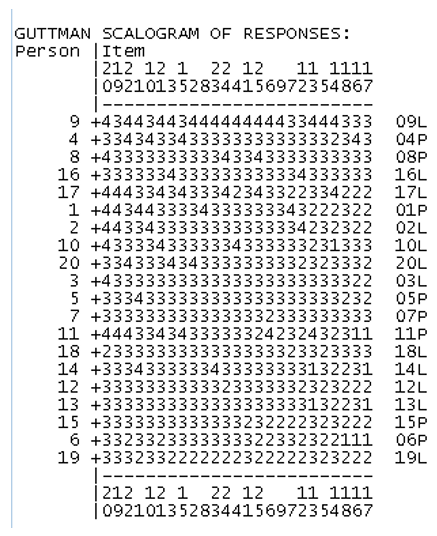
The Effect of Guided Inquiry Laboratory Activity with Video Embedded on Students’ Understanding and Motivation in Learning Light and Optics
Abstract
Full Text:
Download PDFReferences
Anderson, L. W. & Krathwohl, D. (2001). Taxonomy for Learning, Teaching, and Assessing: A Revision of Bloom’s Taxonomy of Educational Objectives. New York, NY: Longman.
Almuntasheri, S., Gillies, R. M., & Wright, T. (2016). The Effectiveness of a Guided Inquiry-Based, Teachers' Professional Development Programme on Saudi Students' Understanding of Density. Science Education International, 27(1), 16-39.
Ambarsari, W., Santosa, S., & Maridi, M. (2013). Penerapan pembelajaran inkuiri terbimbing terhadap keterampilan proses sains dasar pada pelajaran biologi siswa kelas VIII SMP Negeri 7 Surakarta. Pendidikan Biologi, 5(1).
Anggraini, A. N., Zainuddin, & Miriam, S. (2017). Meningkatkan Keterampilan Prosedural Siwa Melalui Model Pengajaran Langsung Pada Materi Ajar Cahaya Dan Alat-Alat Optik Kelas VIII F SMPN 26 Banjarmasin. Berkala Ilmiah Pendidikan Fisika, 1(3), 154–168.
Arbai, S. Z., Edie, S. S., & Pamelasari, S. D. (2014). Pengembangan Modul IPA Terpadu Bermuatan Mind Mapping pada Tema Cahaya dan Penglihatan untuk Kelas VIII SMP/MTS. Unnes Science Education Journal, 3(1).
Berk, R. A. (2009). Multimedia teaching with video clips: TV, movies, YouTube, and mtvU in the college classroom. International Journal of Technology in Teaching & Learning, 5(1).
Cohen, L., Manion, L., and Morrison, K. (2007). Research Method in Edcuation Sixth Edition. USA: Routledge.
Fakayode, S. O. (2014). Guided-inquiry laboratory experiments in the analytical chemistry laboratory curriculum. Analytical and Bioanalytical Chemistry, 406(5), 1267–1271.
Kumdang, P., Kijkuakul, S., & Chaiyasith, W. C. (2018). An Action Research on Enhancing Grade 10 Student Creative Thinking Skills using Argument-driven Inquiry Model in the Topic of Chemical Environment. Journal of Science Learning, 2(1), 9-13.
Milner, A. R., Templin, M. A., & Czerniak, C. M. (2011). Elementary Science Students’ Motivation and Learning Strategy Use: Constructivist Classroom Contextual Factors in a Life Science Laboratory and a Traditional Classroom. Journal of Science Teacher Education, 22(2), 151–170.
Permana, N. A., Widiyatmoko, A., & Taufiq, M. (2016). Pengaruh virtual laboratory berbasis flash animation terhadap pemahaman konsep dan keterampilan berpikir kritis peserta didik tema optik kelas VIII SMP. Unnes Science Education Journal, 5(3).
Pratiwi, W. N. W., Rochintaniawati, D., & Agustin, R. R. (2018). The Effect of Multiple Intelligence-Based Learning Towards Students' Concept Mastery and Interest in Matter. Journal of Science Learning, 1(2), 49-52.
Prima, E. C., Putri, A. R., & Rustaman, N. (2018). Learning Solar System Using PhET Simulation to Improve Students' Understanding and Motivation. Journal of Science Learning, 1(2), 60-70.
Prima, E. C., Putri, C. L., & Sudargo, F. (2017). Applying Pre and Post Role-Plays supported by Stellarium Virtual Observatory to Improve Students’ Understanding on Learning Solar System. Journal of Science Learning, 1(1), 1-7.
Prima, E. C., Utari, S., Chandra, D. T., Hasanah, L., & Rusdiana, D. (2018). Heat and temperature experiment designs to support students’ conception on nature of science. JOTSE: Journal of technology and science education, 8(4), 453-472.
Puspitasari, R., Lesmono, A. D., & Prihandono, T. (2015). Pengaruh Model Pembelajaran Poe (Prediction , Observation and Explanation) Disertai Media Audiovisual Terhadap Keterampilan Kerja Ilmiah Dan Hasil Belajar Siswa Dalam Pembelajaran Ipa-Fisika Di Smp. Jurnal Pembelajaran Fisika, 4(3), 211–218.
Salsabila, E. R., Wijaya, A. F. C., & Winarno, N. (2018). Improving Students’ Sustainability Awareness through Argument-driven Inquiry. Journal of Science Learning, 2(2), 58-64.
Sari, N., Sunarno, W., & Sarwanto, S. (2018). Analisis Motivasi Belajar Siswa dalam Pembelajaran Fisika Sekolah Menengah Atas. Jurnal Pendidikan dan Kebudayaan, 3(1), 17-32.
Schoffstall, A. M., & Gaddis, B. A. (2007). Incorporating guided-inquiry learning into the organic chemistry laboratory. Journal of Chemical Education, 84(5), 848.
Sunarya, Y., & Mudzakir, A. (2017). Solar Cell as Learning Multimedia to Improve Students’ Scientific Literacy on Science and Nanotechnology. Journal of Science Learning, 1(1), 36-43.
Tessier, J. T., & Penniman, C. A. (2006). An inquiry-based laboratory design for microbial ecology. Bioscene, 32(4), 6–11.
Ural, E. (2016a). The Effect of Guided-Inquiry Laboratory Experiments on Science Education Students’ Chemistry Laboratory Attitudes, Anxiety and Achievement. Journal of Education and Training Studies, 4(4), 217–227.
Ural, E. (2016b). The Effect of Guided-Inquiry Laboratory Experiments on Science Education Students ’ Chemistry Laboratory Attitudes , Anxiety and Achievement, 4(4), 217–227.
Van Zile-Tamsen, C. (2017). Using Rasch analysis to inform rating scale development. Research in Higher Education, 58(8), 922-933.
Yuniastuti, E. (2013). Peningkatan keterampilan proses, motivasi, dan hasil belajar biologi dengan strategi pembelajaran inkuiri terbimbing pada siswa kelas VII SMP Kartika V-1 Balikpapan. Jurnal penelitian pendidikan, 13(1).
DOI: https://doi.org/10.17509/jsl.v2i3.15144
Refbacks
- There are currently no refbacks.
Copyright (c) 2019 Tina Afriani

This work is licensed under a Creative Commons Attribution-ShareAlike 4.0 International License.


Jl. Dr. Setiabudhi 229 Bandung 40154, West Java, Indonesia










